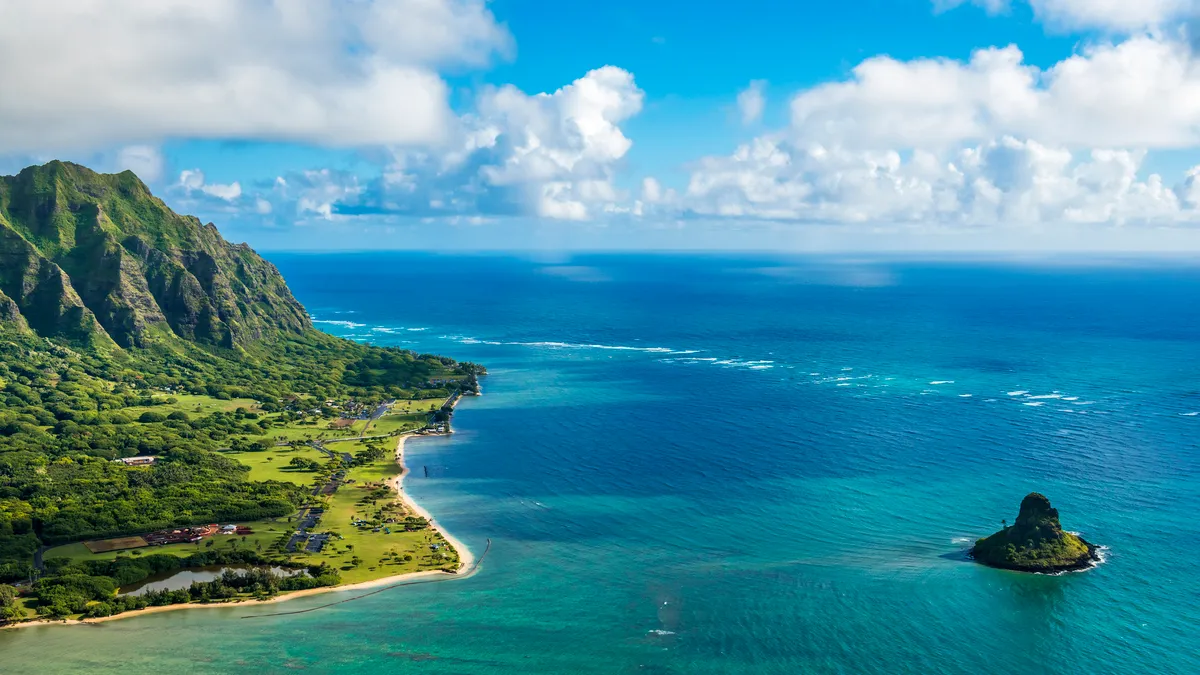Dive Brief:
- The Bureau of Ocean Energy Management has penciled in a 2028 start date for wind leasing off the coast of Oahu, officials said at an intergovernmental meeting in Honolulu on Thursday.
- An initial call for information on two possible lease areas off the coast of Oahu uncovered potential conflicts with military operations in the area, according to Natalie Dayal, a renewable energy analyst for BOEM's Pacific Region. However, a private developer and the Department of Defense have worked out an independent agreement that could facilitate the development of 500 MW to 800 MW in a third possible lease area.
- Offshore wind leasing and development in Hawai’i remains in its earliest stages, and actual construction may not begin for a decade or more, Dayal said.
Dive Insight:
While offshore wind is set to play a critical role in Hawai’i's clean energy future, industry and government proponents of offshore wind development will have to overcome multiple challenges to bring projects to fruition.
The first challenge — conflict with military operations near the island of Oahu — has seemingly solved itself. Dayal told Thursday's intergovernmental task force that Aukahi Energy, a partnership between Progression Energy and EDF Renewables North America, has reached an agreement with the DOD that would allow offshore wind development to proceed in a designated area off the coast of Oahu, subject to certain limitations such as caps on turbine height.
The DOD had previously objected to two possible lease areas suggested by BOEM in 2016, causing BOEM to pause a planned environmental assessment for those areas pending further work to address the military's concerns, Dayal said.
Based on an initial analysis by BOEM, Dayal said the area identified by the DOD should support offshore wind development between 500 MW and 800 MW. That estimate falls neatly in line with the 500 MW to 600 MW of offshore wind that will be needed to meet the state's decarbonization targets and to reduce its dependence on imported oil, biofuels or hydrogen, Mark Glick, chief energy officer for the Hawaii State Energy Office, said.
However, the depth of the waters around Oahu will require developers to mount turbines on floating platforms, Dayal said — and even then, that technology remains unproven at the depths seen in all three of the possible Hawaiian lease areas proposed to date. The deepest floating offshore wind project to date measures some 300 meters to the ocean floor, she said. For its evaluation of Hawaiian lease areas, BOEM considered anything down to 1,300 meters to be within the realm of technical feasibility.
But while Glick argued that offshore wind will play a key role in meeting future energy demand in a state with limited land available for onshore wind or solar development, representatives of native Hawaiian communities indicated at Thursday's meeting that the proposals were not popular with their constituents. Julie-Ann Cachola, a land use planner with the Department of Hawaiian Home Lands, and Kūʻikeokalani Kamakea-ʻŌhelo, who oversees native Hawaiian wellbeing programs at the Office of Hawaiian Affairs, both indicated they would like to see revenues from offshore wind development benefit the native populations.
“If not, just consider there may be legal ramifications that we are looking at down the road,” Kamakea-'Ōhelo said.














